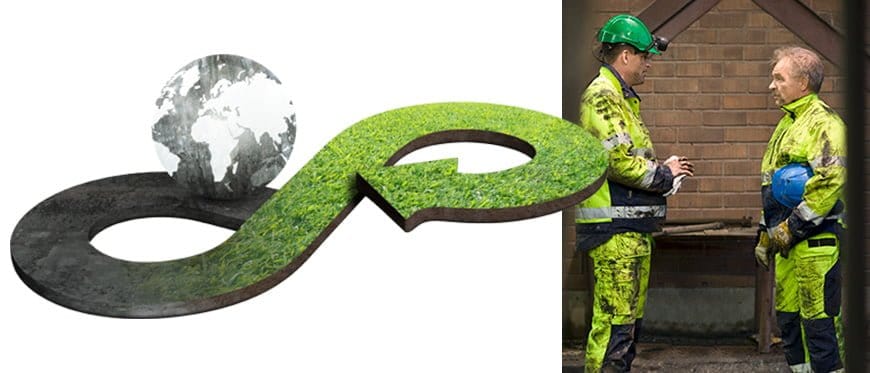The shortest distance between success and sustainability may not be a straight line – it’s more likely a circle. Or to be more precise, a circular economy.
Today’s dominant economic approach is often described as “take-make-dispose,” meaning we take resources, we make whatever we want, however we want to make it, and then, when our products have been consumed, we throw them away. It’s an expedient model for short-term profits, but an unsustainable one for the long-term health of corporations (and the planet we all share).
Reimagining our economic system, reinvigorating profits
When business people first hear the concept of a circular economy described, they often have two responses. First comes the question, “But isn’t that what we’re doing with recycling and our other eco-friendly initiatives?” And next you’ll hear, “I bet that’s going to be a drag on profits.”
As to recycling in our current, linear economy: it simply seeks to remediate waste at the end of a traditional, linear product lifecycle. Rather than fix a problem after the fact, the circular approach is to reimagine the process at the beginning, seeing a product lifecycle as a “life-circle,” and envisioning the entire creation-consumption model as a continuum that doesn’t pre-ordain (and thereby foreshorten) a product’s lifespan.
On the matter of profitability, a recent study by McKinsey and the Ellen MacArthur Foundation found that a circular approach is likely to be more, not less, profitable. In looking at 28 industries in the European marketplace, McKinsey determined that a circular approach could actually boost resource productivity by 3% in Europe, which would translate into total savings of some 2.4 trillion annually.
6 steps around a virtuous circle
So, practically speaking, what steps can a company take to start accessing the benefits of economic circularity? That same McKinsey/Ellen MacArthur Foundation research identified six key activities:
- Regenerate: Start with renewable energy and materials.
- Share: Act like consumers who ride share – companies can resource-share, from facilities to equipment to expertise.
- Optimize: Design out waste, inefficiency and product obsolescence, to prolong product life rather than simply aim at repurchase.
- Loop: Use remanufacturing and recycling to keep components and materials in a closed loop, extending their useful lives.
- Virtualize: Deliver goods and services virtually.
- Exchange: Innovate new materials and processes to replace old ones.
Three big names already in the circle
The circular economy is not a future pipedream — it’s a current reality for several well-known organizations. Dell, the PC giant, has established aggressive goals for a supply chain that s truly circular. It is already making progress on creating a closed-loop, recycled plastic supply chain, as well as reclaiming carbon fiber source materials. Levi Strauss, recognizing the 24 billion pounds of clothing, shoes and textiles that ends up in landfills annually, now welcomes clothing recycling right at its stores. And Method, maker of soaps and cleaning materials, is committed to using Infinitely recyclable materials and renewable energy.
None of those efforts may yet complete a full circle, but it is important to note that they have started on the path and that your organization can, too. There is no prescribed starting point — this economic model is a circle after all — so you can begin at the easiest point for your company, and with any step you like. For ideas and assistance, the aforementioned Ellen MacArthur Foundation can serve as both inspiration and education — and you can look to the example of other companies who bear its mark and recognition, known as the CE 100.
SOURCES
Ellen MacArthur Foundation: Circular Economy
Ellen MacArthur Foundation: Circular Economy: Overview
Essity: A Sustainable and Circular Society
Mackinsey: Mapping the benefits of a circular economy
